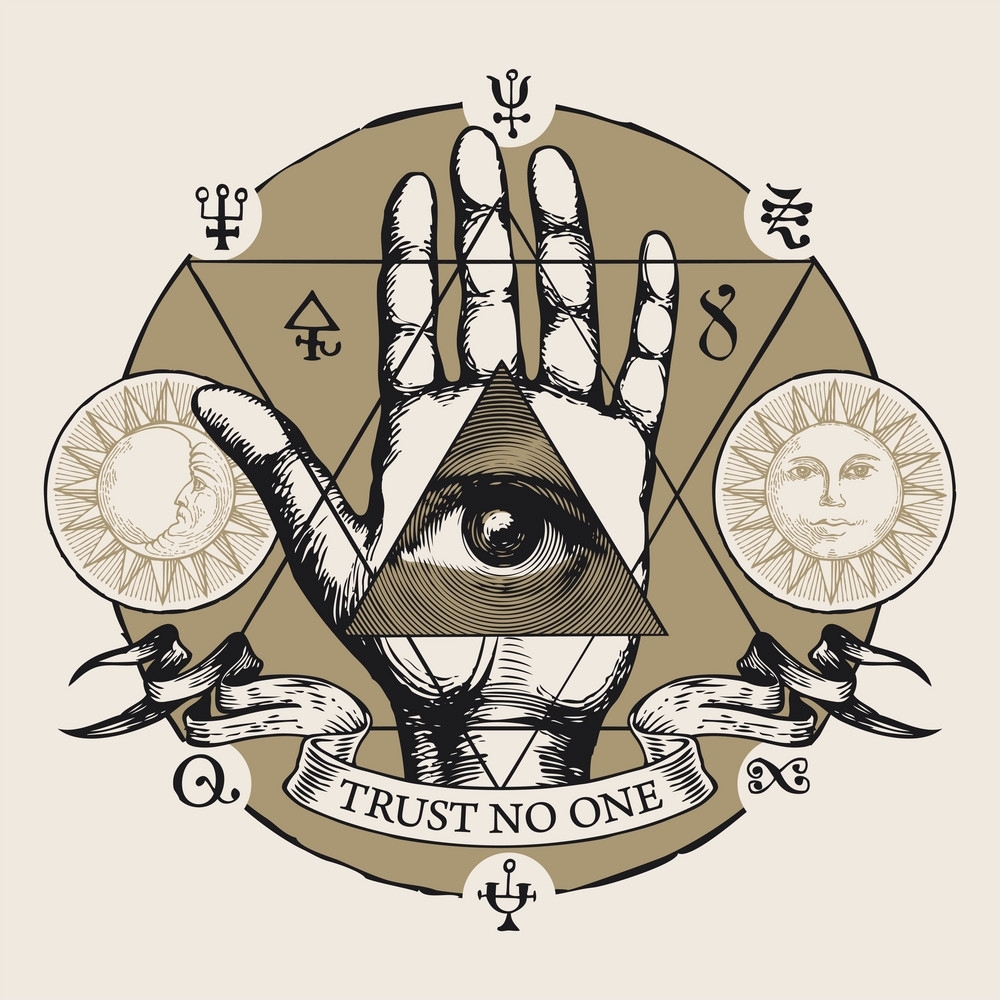The Ouroboros, or Uroboros, is a symbol of a dragon, serpent or snake devouring its own tail.
Its first known appearance was in Ancient Egypt, where it appears in the Enigmatic Book of the Netherworld, a two-part funerary text uncovered in the Tomb of Tutankhamun. Here, it represents the beginning and end of time.
Plato described a self-devouring serpent as the first creature in the universe.
“The living being had no need of eyes because there was nothing outside of him to be seen; nor of ears because there was nothing to be heard; and there was no surrounding atmosphere to be breathed; nor would there have been any use of organs by the help of which he might receive his food or get rid of what he had already digested, since there was nothing which went from him or came into him: for there was nothing beside him. Of design he created thus; his own waste providing his own food, and all that he did or suffered taking place in and by himself. For the Creator conceived that a being which was self-sufficient would be far more excellent than one which lacked anything; and, as he had no need to take anything or defend himself against any one, the Creator did not think it necessary to bestow upon him hands: nor had he any need of feet, nor of the whole apparatus of walking; but the movement suited to his spherical form which was designed by him, being of all the seven that which is most appropriate to mind and intelligence; and he was made to move in the same manner and on the same spot, within his own limits revolving in a circle. All the other six motions were taken away from him, and he was made not to partake of their deviations. And as this circular movement required no feet, the universe was created without legs and without feet.”
Gnostics adopted the symbol to represent eternity and the soul of the world, whose self-devouring nature a devout Gnostic seeks to separate from through developing a relationship with the Divine.
Alchemists use Ouroboros as a sigil. As described by Carl Jung:
“The alchemists, who in their own way knew more about the nature of the individuation process than we moderns do, expressed this paradox through the symbol of the Ouroboros, the snake that eats its own tail. The Ouroboros has been said to have a meaning of infinity or wholeness. In the age-old image of the Ouroboros lies the thought of devouring oneself and turning oneself into a circulatory process, for it was clear to the more astute alchemists that the prima materia of the art was man himself. The Ouroboros is a dramatic symbol for the integration and assimilation of the opposite, i.e. of the shadow. This ‘feed-back’ process is at the same time a symbol of immortality, since it is said of the Ouroboros that he slays himself and brings himself to life, fertilizes himself and gives birth to himself. He symbolizes the One, who proceeds from the clash of opposites, and he therefore constitutes the secret of the prima materia which […] unquestionably stems from man’s unconscious.”
Arguably the most famous version of Ouroboros comes from the The Chrysopoeia of Cleopatra, a second-century alchemical text from Alexandria, in which the self-devouring serpent encloses the words “hen to pan” – one is the all – in its coil. Its black-and-white halves represent the duality espoused by Gnostics, which makes it similar in meaning to the Yin and Yang symbol in Taoism.
Hen to Pan – One is the All
The Upanishads, a body of philosophical work written in the Second Century BC as the foundation of Hinduism, uses the Ouroboros symbol to represent Kundalini, or “corporeal energy” channeled through the seven bodily chakras.
“The divine power, Kundalini, shines like the stem of a young lotus; like a snake, coiled round upon herself she holds her tail in her mouth and lies resting half asleep as the base of the body.”
Because of the association of the Devil with serpents (from the Genesis story of the fall of man, in which Eve is tempted by a serpent to eat from the Tree of Knowledge), Satanists have adopted Ouroboros as a symbol of Lucifer – His unending punishment and His self-destructive nature. Some depictions of Lucifer use the Ouroboros as a halo.


